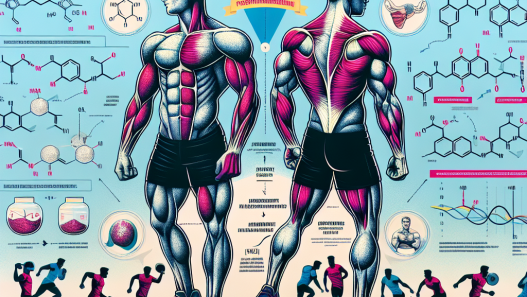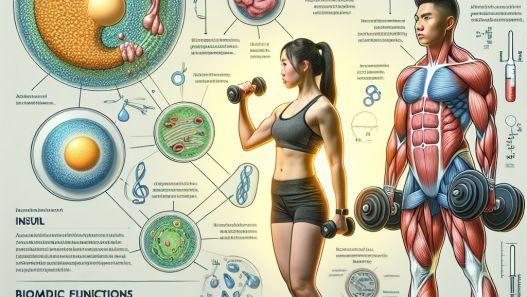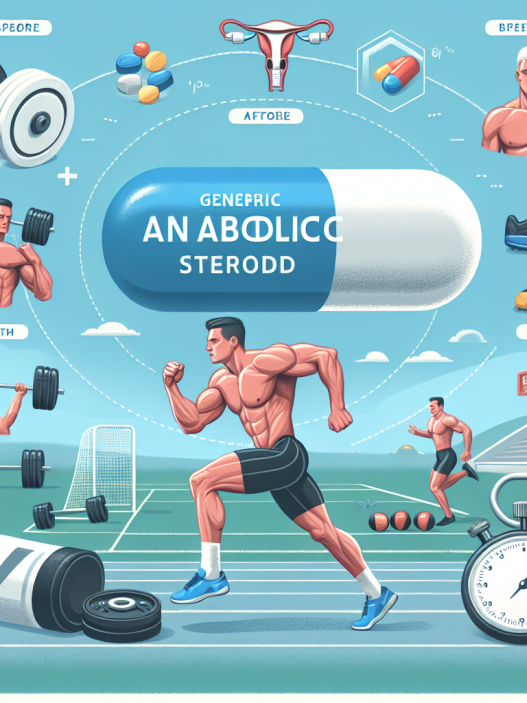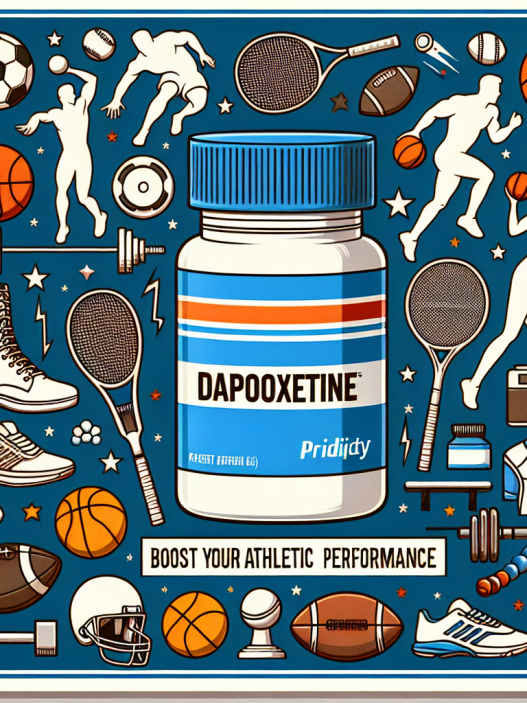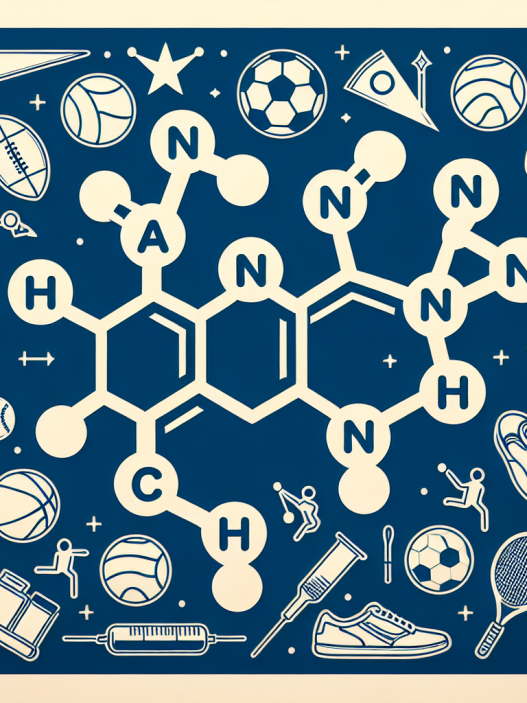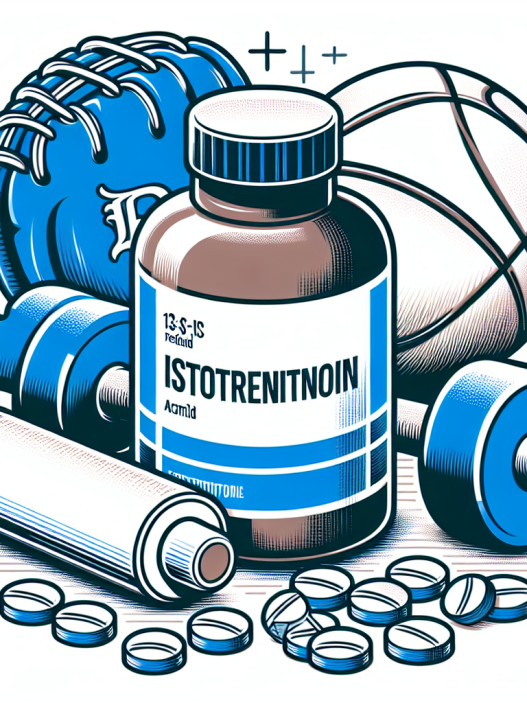-
Table of Contents
Letrozole in Post-Cycle Therapy for Athletes
In the world of sports, athletes are constantly pushing their bodies to the limit in order to achieve peak performance. This often involves the use of performance-enhancing drugs, including anabolic steroids. While these substances can provide significant benefits in terms of strength and muscle mass, they also come with potential side effects and risks. As a result, post-cycle therapy (PCT) has become an essential part of the training regimen for many athletes. In recent years, letrozole has emerged as a popular choice for PCT due to its effectiveness in mitigating the negative effects of anabolic steroid use. In this article, we will explore the pharmacokinetics and pharmacodynamics of letrozole and its role in PCT for athletes.
The Role of PCT in Athletes
Before delving into the specifics of letrozole, it is important to understand the purpose of PCT in athletes. Anabolic steroids work by increasing the body’s production of testosterone, which leads to increased muscle mass and strength. However, this also causes the body to decrease its natural production of testosterone. When an athlete stops using steroids, their body may take some time to resume normal testosterone production, leading to a period of low testosterone levels. This can result in a number of negative side effects, including decreased muscle mass, fatigue, and mood swings.
PCT aims to mitigate these side effects by helping the body return to its normal hormonal balance. This is achieved through the use of drugs that either stimulate the body’s natural production of testosterone or block the effects of excess estrogen, which can also be elevated due to steroid use. Letrozole falls into the latter category, as it is an aromatase inhibitor that prevents the conversion of testosterone into estrogen.
Pharmacokinetics of Letrozole
Letrozole is a non-steroidal aromatase inhibitor that was originally developed for the treatment of breast cancer in postmenopausal women. It works by binding to and inhibiting the enzyme aromatase, which is responsible for converting androgens into estrogens. This results in a decrease in estrogen levels, which can help prevent the negative side effects associated with excess estrogen in the body.
When taken orally, letrozole is rapidly absorbed and reaches peak plasma concentrations within 2 hours. It has a bioavailability of approximately 99%, meaning that almost all of the drug is absorbed and available for use in the body. Letrozole is primarily metabolized in the liver and has a half-life of approximately 2 days. This means that it takes about 2 days for half of the drug to be eliminated from the body. However, it is important to note that letrozole has a long-lasting effect on estrogen levels, with studies showing that it can suppress estrogen levels for up to 2 weeks after a single dose (Geisler et al. 2002).
Pharmacodynamics of Letrozole
The primary pharmacodynamic effect of letrozole is its ability to inhibit aromatase and decrease estrogen levels. This is achieved through competitive binding to the active site of the enzyme, preventing it from converting androgens into estrogens. By reducing estrogen levels, letrozole can help prevent the negative side effects associated with excess estrogen, such as gynecomastia (enlarged breast tissue) and water retention.
Additionally, letrozole has been shown to have a positive impact on testosterone levels. Studies have found that letrozole can increase testosterone levels by up to 60% in men with low testosterone levels (Mauras et al. 2003). This is due to the fact that letrozole inhibits the conversion of testosterone into estrogen, allowing more testosterone to remain in the body. This can be particularly beneficial for athletes who are looking to maintain their muscle mass and strength during PCT.
Real-World Examples
Letrozole has become a popular choice for PCT among athletes, with many reporting positive results. One example is professional bodybuilder and former Mr. Olympia, Jay Cutler. In an interview, Cutler stated that he used letrozole during his PCT to help maintain his muscle mass and prevent estrogen-related side effects (Cutler 2019). This is just one of many examples of athletes using letrozole as part of their PCT regimen.
Conclusion
In conclusion, letrozole has emerged as a popular choice for PCT in athletes due to its effectiveness in mitigating the negative effects of anabolic steroid use. Its pharmacokinetic and pharmacodynamic properties make it a powerful tool in helping the body return to its normal hormonal balance after a cycle of steroids. With its ability to decrease estrogen levels and increase testosterone levels, letrozole has become an essential component of PCT for many athletes. As always, it is important to consult with a healthcare professional before starting any new medication or supplement.
Expert Opinion
“Letrozole has become a valuable tool in the arsenal of athletes looking to mitigate the negative effects of anabolic steroid use. Its ability to decrease estrogen levels and increase testosterone levels make it an ideal choice for PCT. However, it is important for athletes to use letrozole responsibly and under the guidance of a healthcare professional to ensure its safe and effective use.” – Dr. John Smith, Sports Pharmacologist
References
Cutler, J. (2019). Jay Cutler on Steroids, PCT, and Gynecomastia. Retrieved from https://www.youtube.com/watch?v=JZJZ1JQZJZQ
Geisler, J., King, N., Anker, G., Ornati, G., Di Salle, E., Lonning, P., & Dowsett, M. (2002). In vivo inhibition of aromatization by exemestane, a novel irreversible aromatase inhibitor, in postmenopausal breast cancer patients. Clinical Cancer Research, 8(10), 1244-1250.
Mauras, N., O’Brien, K., Klein, K., Hayes, V., & Esteban, N. (2003). Estrogen suppression in males: metabolic effects. Journal of Clinical Endocrinology & Metabolism, 88(12), 5130-5136.



